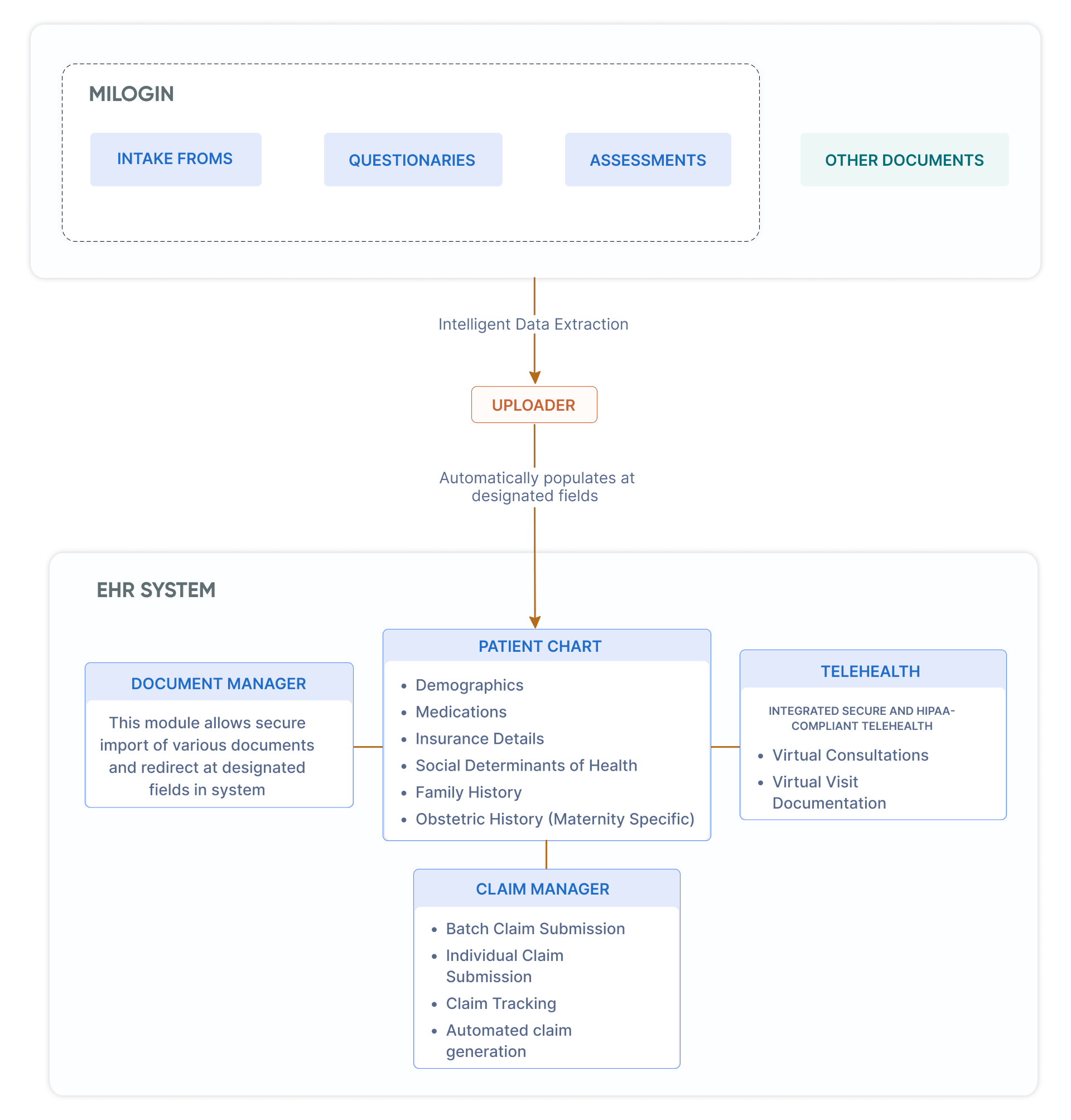Overview
Our client is a leading healthcare provider in the United States, specializing in maternal and infant health services. With a dedicated team of caregivers and clinicians, the client offers comprehensive support to mothers and infants throughout pregnancy. Operating within the Maternal Infant Health Program (MIHP) framework, the client is committed to delivering high-quality care and assistance to families, focusing on improving maternal and infant health outcomes.
However, the client currently faces challenges due to the use of multiple systems for different tasks, such as patient charting, progress note creation, and plan of care development. This fragmented approach hinders workflow efficiency and leads to errors in processes and documentation. To address these challenges, the client has made the decision to move ahead with custom EHR software development specifically tailored for the MIHP.
Business challenges
The client faced several challenges with their existing systems, which hindered workflow efficiency and caused errors in processes and documentation:
1. Multiple Systems:
The client used multiple systems for different tasks, such as patient charting, progress note creation, and plan of care development. This fragmented approach led to inefficiencies, as caregivers and clinicians had to switch between systems.
2. Increased Risk for Errors:
Manual data entry across multiple systems increased the likelihood of errors and inconsistencies in patient records, potentially impacting patient safety.
3. Limited Functionality:
The existing systems lacked features for creating detailed client and patient profiles, including capturing all essential demographics, health data, and documents.
4. Data Silos:
Essential patient data was scattered across different systems, making it difficult to obtain a holistic view of each patient's health history and care needs. This hindered informed decision-making and coordinated care delivery.

Solution
Our proposed solution addresses the client's needs for a comprehensive and efficient EHR system within the MIHP program, incorporating the following features and functionalities:
1. Patient Management:
-
Patient Creation:
The patient creation process captures a wide range of essential information to establish a complete picture of each patient's health and needs. Here's a breakdown of the key data points:
-
Patient Listing:
The patient listing provides a comprehensive overview of your patient population at a glance. Here's what you'll see:
1. Demographics
2. Medications
3. Insurance Details
4. Social Determinants of Health
5. Family History
6. Obstetric History (Maternity Specific)
1. Patient Name and Basic Details: Easy identification of patients.
2. Last Visit Date (Color-Coded):
- Red: Patients who are past due for a follow-up appointment are highlighted in red, prompting immediate action to schedule them.
- Yellow: Patients with upcoming appointments within a specific timeframe (e.g., following 30 days) are highlighted in yellow as a reminder for upcoming visits.
- Green: Patients who are up-to-date on their appointments are highlighted in green, providing a clear visual indicator.
3. Next Appointment Date and Time: Clear visibility of upcoming appointments for each patient.
4. Assigned Case Manager: Quickly identify the designated case manager responsible for each patient's care coordination.
5. Health Plan Information: Easy access to a patient's specific health plan details, facilitating billing and insurance communication.
2. Document Management:
-
Uploader:
This module allows secure import of various documents, including:
-
Intelligent Data Extraction:
Utilize Optical Character Recognition (OCR) technology to extract relevant data from uploaded documents automatically.
-
Pre-Populate Patient Records:
Extracted data automatically populates designated fields within the patient's charting, reducing data entry time and minimizing errors.
1. Intake Forms
2. Questionnaires
3. Assessments downloaded from government sites
3. Claims Management:
-
Integrated Claims Module:
Streamline claim submission with an integrated claims management module, allowing:
- Batch Claim Submission: Submit multiple claims at once for efficient processing.
- Individual Claim Submission: Submit individual claims for specific patient encounters.
- Claim Tracking: Monitor the status of submitted claims in real-time, with easy access to claim details, rejection reasons (if any), and reimbursement information.
-
Automated Claim Generation:
The system can automatically generate claims for faster submission based on patient encounters and service codes (optional feature).
-
Secure Communication:
Electronically transmit claims directly to insurance providers through secure channels.
4. Telehealth Integration:
-
Seamless Integration:
Integrate a secure and HIPAA-compliant telehealth platform within the EHR system, allowing:
- Virtual Consultations: Conduct virtual consultations with patients remotely, expanding access to care and improving convenience.
- Virtual Visit Documentation: Directly document telehealth encounters within the patient's records (chart), including notes, assessments, and treatment plans.
- Telehealth Scheduling: Schedule virtual appointments directly within the EHR system, providing flexibility for patients and providers.
Value Delivered
-
Improved Efficiency:
Streamlined workflows, automated features, and intelligent data extraction save valuable time and reduce administrative burden.
-
Enhanced Patient Care:
Comprehensive patient information, telehealth capabilities, and improved communication lead to better patient engagement and outcomes.
-
Accurate Claims Management:
Automated claim generation and real-time claim tracking ensure timely and accurate claim submissions for improved reimbursement.
-
Data-Driven Decision Making:
Reports and analytics generate valuable insights to improve program effectiveness and resource allocation.
